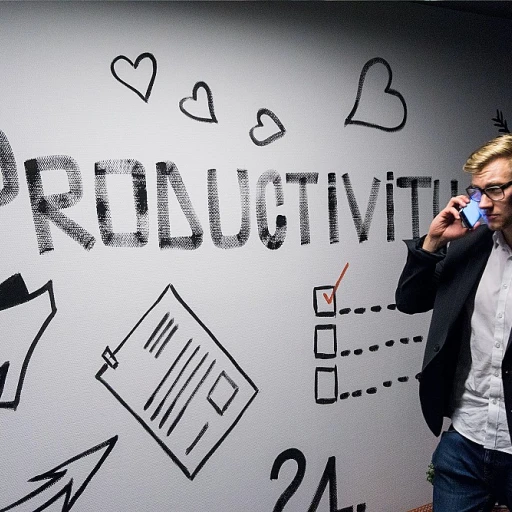
Understanding the Skills Gap
Grasping the Essence of Skills Deficiencies
A crucial step in addressing managerial fit and improving a company's culture is understanding the intricacies of the skills gap. This gap often emerges when there's a mismatch between the skills a job demands and what the candidates—or sometimes even existing employees—possess.
Several factors contribute to the skills gap. Rapid technological advancements can outpace the current workforce's ability to keep up, creating a deficiency in necessary talents. Additionally, as companies evolve, their expectations around soft skills, such as leadership and effective communication, expand alongside technical abilities.
For hiring managers, acknowledging these deficiencies in skills is a pivotal step when initiating the hiring process. It enables them to tailor interview questions that truly assess the managerial competencies a company needs. This proactive approach benefits not only in ensuring a manager-employee fit but also in upholding the desired company culture.
You'll find that pinpointing these gaps helps develop targeted training and development strategies designed to elevate the pool of candidates and employees, thereby promoting a more engaging and effective work environment. Understanding this complexity is critical for any company aiming to bridge the divide between current skills and future growth needs.
To build sustainable solutions, we need to explore concepts like the KSao Framework, which allows organizations to deepen their understanding of key competencies and align them with their long-term goals.
Identifying Key Managerial Competencies
Key Competencies for Effective Management
In the quest to bridge the skills gap, identifying the right managerial competencies is crucial. A manager's role is multifaceted, requiring a blend of technical and soft skills to ensure the team and company thrive. Understanding these competencies helps in finding the right managerial fit, aligning with both the job description and company culture.
Essential Skills for Managers
Managers need a diverse skill set to navigate the complexities of modern work environments. Here are some key competencies:
- Leadership: The ability to inspire and guide team members towards achieving goals.
- Problem Solving: Critical thinking and decision-making skills to address challenges effectively.
- Communication: Clear and effective communication to ensure understanding and collaboration.
- Employee Engagement: Skills to motivate and engage employees, fostering a positive work environment.
- Adaptability: The capacity to adjust to changing circumstances and embrace new ideas.
- Time Management: Efficiently managing time to balance various responsibilities and deadlines.
Aligning Competencies with Organizational Needs
Identifying these competencies is just the beginning. It's essential to align them with the specific needs of the organization. This involves assessing the current team dynamics, company culture, and the strategic goals of the business. By doing so, hiring managers can ensure that the candidates they select not only possess the necessary skills but also fit seamlessly into the company culture.
Evaluating Candidates During the Hiring Process
During the hiring process, it's important to ask the right interview questions to evaluate a candidate's managerial fit. Questions should be designed to assess both technical abilities and cultural alignment. This ensures that the new hire will not only perform well in their role but also contribute positively to the team and company culture.
For more insights on developing these competencies, you can explore effective staff development strategies that can enhance managerial skills and bridge the skills gap effectively.
Assessing Organizational Needs
Aligning Managerial Competencies with Organizational Needs
The alignment of managerial competencies with organizational requirements is critical for success in any company. Every organization has its unique culture, work environment, and operational demands that necessitate specific leadership qualities in its managers. Thus, aligning the skills and traits of potential managers with these needs is paramount.
Identifying competencies is not a mere task of tallying skills; it involves a comprehensive evaluation of how these skills translate into the broader company culture and operations. As companies sculpt their job descriptions, they must remain vigilant about the core competencies their managers must embody. This means looking beyond technical prowess to encompass soft skills like problem solving, teamwork, and cultural fit, ensuring new hires can seamlessly integrate and lead effectively within existing teams.
During the hiring process, asking the right interview questions can unearth insights into a candidate's compatibility with the organizational ethos. A keen focus on both managerial fit and a candidate’s ability to elevate employee engagement is vital. Questions should probe areas that both assess soft skills and reveal how candidates have navigated past business challenges.
Furthermore, company leadership must continuously assess and reassess their managerial needs. This is not simply to fill current vacancies, but to proactively anticipate future needs. The trajectory of the market, technological advancements, and evolving organizational strategies can all influence what managerial competencies will be most crucial.
Finally, it is essential to integrate feedback from current team members. Employees' insights provide invaluable context about what they need from a manager to thrive and excel. Incorporating these perspectives helps ensure that new hires not only meet the technical requirements of the job but fit well within the team, enhancing overall employee satisfaction and productivity.
Training and Development Strategies
Developing a Comprehensive Training Program
To bridge the skills gap effectively, companies need to invest in robust training and development strategies. A well-structured program not only enhances the skills of current employees but also aligns them with the company culture and strategic goals. Here are some key elements to consider:
- Identify Skill Gaps: Before designing a training program, it's crucial to identify the specific skills that are lacking. This involves analyzing job descriptions, conducting interviews with managers, and gathering feedback from team members.
- Tailor Training to Fit: Customize training sessions to fit the unique needs of your company and employees. This ensures that the training is relevant and directly applicable to their roles.
- Incorporate Soft Skills: While technical skills are important, soft skills such as leadership, problem-solving, and communication are equally vital. Training programs should address these areas to develop well-rounded employees.
- Leverage Technology: Utilize online platforms and digital tools to deliver training. This approach can be more flexible and accessible, allowing employees to learn at their own pace and time.
- Continuous Learning: Encourage a culture of continuous learning by providing ongoing training opportunities. This keeps employees engaged and helps them adapt to evolving job requirements.
Evaluating Training Effectiveness
Once a training program is implemented, it's important to assess its effectiveness. This can be done through regular feedback sessions, performance evaluations, and by measuring improvements in employee engagement and productivity. Hiring managers should also be involved in this process to ensure that the training aligns with the hiring process and the profiles managerial fit.
By focusing on these strategies, companies can not only bridge the skills gap but also enhance their overall work environment, making it a better fit for both current and future employees.
The Role of Technology in Bridging the Gap
Technological Innovations and Skill Development
In the contemporary work environment, technology plays an increasingly vital role in bridging the skills gap, particularly when it comes to managerial fit. Companies are leveraging digital tools and platforms to streamline the hiring process, reinforce training programs, and enhance employee engagement to ensure a seamless cultural and managerial fit.
One significant application of technology is in shaping how hiring managers can better identify both managerial and culture fit among candidates. With AI-driven platforms and sophisticated analytics, companies can assess potential employees' soft skills, leadership styles, and problem-solving abilities. This streamlines the process of evaluating whether a candidate aligns with the company's culture and its team dynamics, ultimately influencing employee retention and satisfaction.
Furthermore, online training and development platforms offer tailored courses to enhance the skills of current employees, focusing on both job-specific competencies and soft skills critical for effective management. These programs allow for flexibility and accessibility, enabling employees to upgrade their skills at their own pace, thus fitting well into their existing work schedule. This approach not only supports talent acquisition but also boosts the confidence and competency of individuals within the organization, preparing them for more advanced roles and responsibilities.
Technology also facilitates real-time feedback and performance analytics, helping managers understand employee needs and adjust their leadership strategies accordingly. This fosters a more adaptive work environment where managerial and employee engagement can flourish.
As companies continue to integrate technological solutions into their operations, it becomes imperative that hiring managers remain equipped to utilize these tools effectively. This involves staying informed about technological trends and being open to adapting management styles to incorporate new digital strategies for problem-solving and team collaboration.












